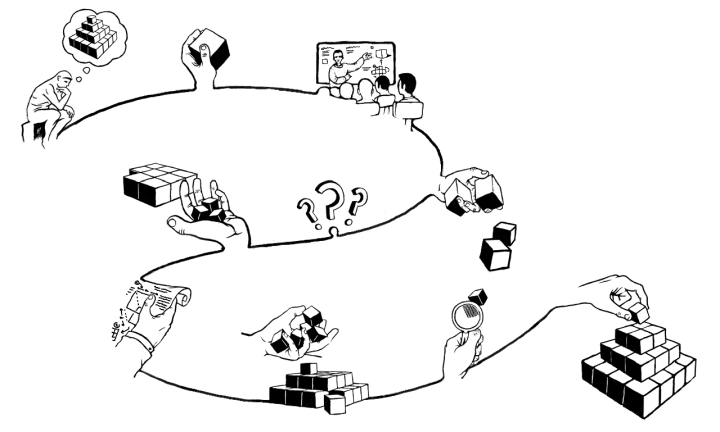In my next four blogs I am going to share the different ways of displaying data. There are several methods to present data, however I will only discuss four common types over the next four weeks and go into depth with them, with this blog including one.
A single statistic only shares a portion of any results, whereas a well-designed statistical display of data helps to understand relationships taking place. When there are a large number of results to report, it is more clear and efficient to do so with a graph of some sort (Price, 2015). We all learn in our school years how to interpret and read different types of data sets, its part of the curriculum. Even just learning how to understand a simple bar graph comes in useful in the future. We see data sets being displayed everywhere, whether it is in the media (newspapers, television, online), scholarly journals, books, the workplace, schools, etc. Displaying data sets in a visual way rather than written is helpful to visualize any trends or patterns. Additionally, it is very difficult to share all the data in words, whereas a visual can encompass all of it as a whole.
When information of any kind is being posted, we must ask the question: How should the data be presented? The answer to this question depends on where the data is being posted, because this will change the way in which it is shared. For example, if data results were being posted in a scholarly journal, we would see many complex graphs because of the audience and complexity of the research. Whereas, if it was in a newspaper in which the general population is reading, then the display of data would be different and simpler so that everyone can understand it. Moreover, depending on the type of data there are useful ways to display certain data, as I will discuss.
I will begin by discussing the bar graph, which is one of the techniques used to present data in a visual form so that the viewer is able to see any trends or patterns (Statistics Canada, 2013). This sounds and looks simple but there are many factors of a bar graph. Bar graphs are used constantly in articles and we see them almost everywhere. Bar graphs can be either vertical, horizontal or stacked (Statistics Canada, 2013). The bars portray different values, with an X and Y-axes to represent the scale.
This is an example of a vertical bar graph:

This is an example of a vertical bar graph with two series of data:

This is an example of a horizontal bar graph:

This is an example of a horizontal bar graph with two series of data:

This is an example of a stacked bar graph:

The following is an example of a bar graph including error bars to represent the standard errors. A standard error is the standard deviation of the distribution (Price, 2015). These error bars are used because then one can see whether a difference is statistically significant or not (Price, 2015).

A disadvantage of bar graphs is that researchers can choose a specific graph in order to manipulate data, making individuals misinterpret the results. An example of this is when researchers create the X or Y-axes as increasing very rapidly or slowly, so that we think something is drastic. When looking at bar graphs it is important to look at the axes and take the variables into consideration before making a judgment. The most common and best use of bar graphs is dealing with frequency distribution and time-series statistics (Statistics Canada, 2013). Most people can read and understand bar graphs, and thus they are a widespread way of displaying data.
There are also many requirements when presenting statistics in bar graphs. The American Psychological Association (APA) has guidelines, which includes the idea that the reader should be able to understand the results based solely on the graph and its caption, without having to refer to the text for explanation (Price, 2015). There are also technical guidelines for graphs including rules regarding layout, axis labels, legends, and captions. For layout guidelines the graph should be somewhat wider than it is tall, the independent variable should be plotted on the x-axis and the dependent variable on the y-axis, and values should increase from left to right on the x-axis and from bottom to top on the y-axis (Price, 2015). The axis labels have to include the units of measurement if they are not already in the caption, the labels should be parallel to the axis, and legends should be placed within the boundaries of the graph (Price, 2015). Captions are supposed to briefly describe it, explain any abbreviations, and captions in an APA manuscript are to be presented on a separate page at the end.
Though bar graphs are simple, they are important in displaying data. It is also important to understand the guidelines for publishing articles and results. Bar graphs are used in many psychological research papers and are perhaps the most common method of depicting data (Newman & Scholl, 2012). Although as Newman & Scholl (2012) state, one must not give in to the tendency to depict bar graphs as asymmetric, as many bar graphs are depicted in a certain way to gain a certain objective. I think that bar graphs are very useful and helpful in understanding data and observing results, however as with anything one must look into the details. Many do not understand the misinterpretations and therefore believe what they see, which is not a good thing.
References
Bar graphs. (2013). Statistics Canada. Retrieved from http://www.statcan.gc.ca/edu/power-pouvoir/ch9/bargraph-diagrammeabarres/5214818-eng.htm
Newman, G.E. & Scholl, B.J. (2012). Bar graphs depicting averages are perceptually misinterpreted: The within-the-bar bias. Psychonomic Bulletin & Review, 19, 601-607.
Price, P.C. (2015). Expressing your results. Research methods in psychology: Core concepts and skills. Retrieved from http://catalog.flatworldknowledge.com/bookhub/18?e=price_1.0-ch12_s03














